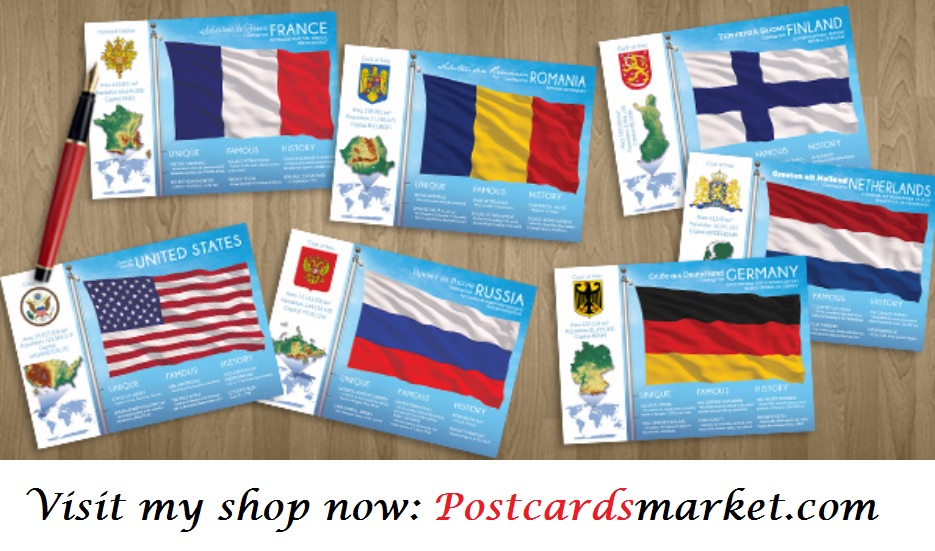Sent: 10.01.2017
Received 19.01.2017
Travel time: 9 days
Sender : Masayo Nishimura from Gero - Town famous for "Hot Springs"
Wiki:
The national flag of Japan is a rectangular white banner
bearing a crimson-red disc at its center. This flag is officially called
Nisshōki (日章旗,
the "sun-mark flag"), but is more commonly known in Japan as Hi no
maru (日の丸,
the "circle of the sun"). It embodies the country's sobriquet: Land
of the Rising Sun.
The Nisshōki flag is designated as the national flag in the
Law Regarding the National Flag and National Anthem, which was promulgated and
became effective on August 13, 1999. Although no earlier legislation had specified
a national flag, the sun-disc flag had already become the de facto national
flag of Japan. Two proclamations issued in 1870 by the Daijō-kan, the
governmental body of the early Meiji period, each had a provision for a design
of the national flag. A sun-disc flag was adopted as the national flag for
merchant ships under Proclamation No. 57 of Meiji 3 (issued on February 27,
1870), and as the national flag used by the Navy under Proclamation No. 651 of
Meiji 3 (issued on October 27, 1870). Use of the Hi no maru was severely
restricted during the early years of the Allied occupation of Japan after World
War II; these restrictions were later relaxed.
The sun plays an important role in Japanese mythology and
religion as the Emperor is said to be the direct descendant of the sun goddess
Amaterasu and the legitimacy of the ruling house rested on this divine
appointment and descent from the chief deity of the predominant Shinto
religion. The name of the country as well as the design of the flag reflect this
central importance of the sun. The ancient history Shoku Nihongi says that
Emperor Monmu used a flag representing the sun in his court in 701, and this is
the first recorded use of a sun-motif flag in Japan. The oldest existing flag
is preserved in Unpō-ji temple, Kōshū, Yamanashi, which is older than the 16th
century, and an ancient legend says that the flag was given to the temple by
Emperor Go-Reizei in the 11th century. During the Meiji Restoration,
both the sun disc and the Rising Sun Ensign of the Imperial Japanese Navy
became major symbols in the emerging Japanese Empire. Propaganda posters,
textbooks, and films depicted the flag as a source of pride and patriotism. In
Japanese homes, citizens were required to display the flag during national
holidays, celebrations and other occasions as decreed by the government.
Different tokens of devotion to Japan and its Emperor featuring the Hi no maru
motif became popular during the Second Sino-Japanese War and other conflicts.
These tokens ranged from slogans written on the flag to clothing items and
dishes that resembled the flag.



















































